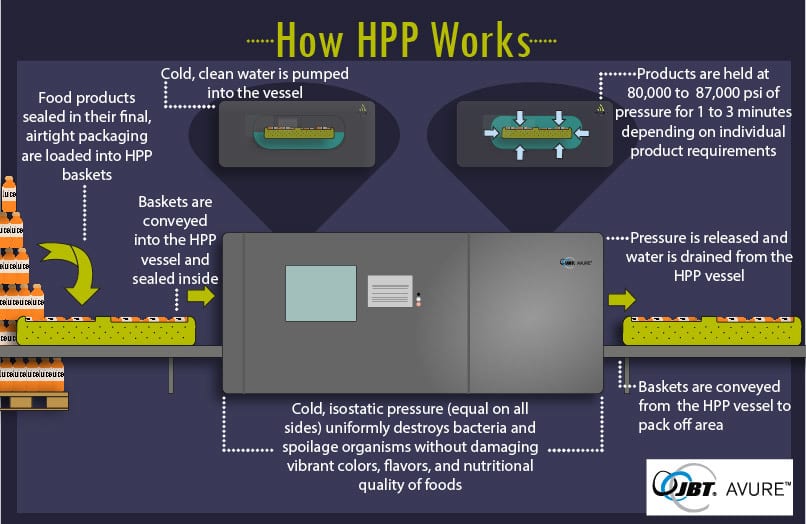DECember 2022

HPP and Health
for Consumer Demand
Manufacturers Turn to HPP
Manufacturers are turning to cold pasteurization to provide health-conscious consumers with the clean-label foods they’re searching for.
by Derrick Teal, Editor-in-chief
Image courtesy of Getty Images / Prostock-Studio
A healthier lifestyle is among the many societal shifts caused by COVID. While there were definitely people focused on health prior to the pandemic, having to stay at home to cook and seeing what exactly was going into their meals each day put a renewed focus on healthier living. This emphasis has made the health food category extremely competitive. So the question is now: How can manufacturers gain an edge with consumers in the space?
Many CPGs are finding that the answer lies with cold pasteurization, otherwise known as high-pressure processing (HPP). Natur+L XTD, a cold food processing services company in Canada, recently added a new press from Quintus Technologies to its Montreal facility. The press was added due to the increased demand seen by company for its services. The company expects its processing capacity to increase to almost 42 million pounds annually with the addition of the new machine, which would be an increase in capacity of about 75%. And that’s just a single example of the demand from consumers.
HPP uses ultra-high pressure purified water to keep packaged food and drinks pathogen free and to stay fresh longer. Food and beverage are subjected to 87,000 lbs. of pressure per square inch, the same amount of pressure as six times the deepest part of the ocean. At this very high pressure, bacteria such as Listeria, E. coli and Salmonella are destroyed.
“With consumer demand on the rise for fresh food without preservatives, food and beverage companies are increasingly turning to HPP for food safety, tasty, fresh and nutritious food without preservatives and extended shelf life,” says Roberto Peregrina, director of Hiperbaric USA. “Many food applications benefit from HPP—and the list keeps growing.”
The primary benefit of HPP when compared to traditional pasteurization is that HPP doesn’t use heat in the process. Heat, as we should know from high school chemistry, can be used to break chemical bonds through an endothermic reaction. “HPP, under current commercial production conditions, does not affect covalent bonds so there are limited to no effects on the natural components in the products,” says Dr. Errol Raghubeer, JBT-Avure’s senior vice president of HPP science & technology. “Conversely, processes such as thermal treatment, depending on the degree of heat treatment, has a significant effect on certain nutritional components and, as importantly, thermal processes have been shown to destroy critical cofactors and enzymes that are needed for the absorption of important nutrients such as folate and B-vitamins. As with other pasteurization processes, HPP inactivates foodborne pathogens and spoilage microorganisms providing a safe product with extended shelf-life and quality.”
This infographic shows the process behind HPP. People looking for minimally processed foods may opt for brands that use HPP because it doesn't use thermal pasteurization, which can alter the product and its health benefits. Image courtesy of JBT-Avure

Raghubeer adds that almost any food or beverage product that poses a food safety risk to consumers can make use of HPP. HPP also helps producers to minimally process products while still meeting regulatory requirements. “The raw fruit-juice beverages category uses HPP to satisfy the FDA’s Juice HACCP Rule (2004),” he says. “Certain products cannot be processed by heat, such as sliced RTE deli meats, due to product damage but are susceptible to contamination during slicing. HPP is recognized by the FSIS as a viable post-lethality treatment (PLT) for controlling Listeria monocytogenes and other pathogens in RTE meat products. One growing HPP application is in the pet food industry. Raw meat ingredients, that commonly have high levels of foodborne pathogens, as well as the final formulation are HPP treated to eliminate Salmonella, pathogenic E. coli and Listeria with little to no effects on natural nutrients.
“This is done not only to protect the animal’s health but the wellbeing of the pet handlers,” Raghubeer adds. “After HPP, these products can be further processed with methods that do not have a significant impact on natural food components, such as freeze drying, and be marketed without further processing as a pathogen-free frozen or refrigerated product.”
Ngoc Phan, HPP microbiologist & applications manager for Quintus Technologies, concurs that HPP can increase sales with people looking for minimally processed foods and adds that companies can also save money because, “A substantial increase in refrigerated product shelf life also means wider market reach, decreased shrink and fewer production runs.”
“HPP automation increases throughputs with automatic loading stations, basket pre-feeders, shaker conveyors, robotic pick-and-place systems and robotic case packers." — Roberto Peregrina
The scalable Quintus QIF 400L HPP system features an 18.5-in. diameter vessel that maximizes load capacity and throughput and a compact footprint for fast installation and ease of maintenance. Image courtesy of Quintus Technologies

When it comes to product runs, modifications in handling systems and bulk processing have played important roles in improving the efficiency of HPP as well as enabling more environmentally friendly packaging options. For example, JBT-Avure has introduce its FlexiBulk system that processes pumpable food and beverages in bulk which can then be packaged into containers such as glass and paper-based materials to reduce the use of plastic bottles and containers.
Ed Williams, general manager Americas for Quintus Technologies says, “All newest-generation HPP presses from Quintus Technologies utilize the advantages of frequency controlled motor drives to minimize energy consumption, as well as heat generation. Further, the Quintus SmartPress functionalities and AI-algorithm-based condition monitoring provide real-time tracking of system performance to optimize service intervals, control parts inventory and maximize operating uptime.”
JBT-Avure’s FlexiBulk HPPs both individually packaged products and food and beverage bulk products simultaneously, allows for filling product in multiple container options and can fill up to 55 gal./minute. Image courtesy of JBT-Avure

“Another advancement is HPP automation, which allows the mostly manual HPP process to be automated with robotic arms and other equipment, increasing throughput, productivity and product tracing, while reducing workplace injuries and labor costs,” says Peregrina. “HPP automation increases throughputs with automatic loading stations, basket pre-feeders, shaker conveyors, robotic pick-and-place systems and robotic case packers. After HPP, shaker conveyors remove excess water on packaging. Robotics can then pick single or multiple items to pack single or multiple cases per cycle.”
As consumers seek to maintain a healthier lifestyle, HPP can help them—and their pets—to get the minimally processed foods and beverages they’re after while helping manufacturers get the healthier bottom line they’re after. FE
DecEMBER 2022


